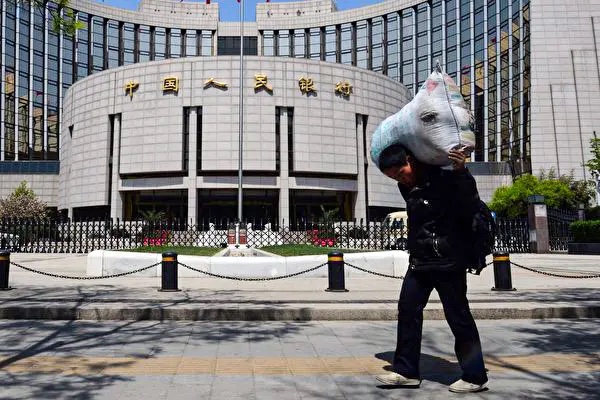Bohai Bank is currently selling non-performing assets worth 289 billion yuan at a discounted price of 60%, highlighting the worsening problem of bad debts in the Chinese banking sector.
According to official statistics from the Chinese Communist Party, as of the end of the first quarter of 2024, the balance of non-performing loans in Chinese commercial banks was 3.4 trillion yuan, an increase of 141.4 billion yuan from the previous quarter.
Bohai Bank is the youngest nationwide joint-stock commercial bank in China. In addition to selling assets at a discount, the bank is facing pressures such as declining performance over the years, a high non-performing loan ratio, and a sharp drop in stock prices.
The situation at Bohai Bank is just the tip of the iceberg, reflecting the tremendous pressure the banking industry is facing as the Chinese real estate bubble bursts and economic growth slows down. This pressure has also spread to asset management companies dealing with banks’ bad debts.
Bohai Bank is headquartered in Tianjin, an area that has been grappling with issues such as plummeting property prices and overcapacity in the manufacturing industry. Land sales from real estate have traditionally been an important source of local government revenue in the region.
In 2023, nearly half of Bohai Bank’s 932 billion yuan loans came from northern and northeastern China. The bank’s pre-tax profit plummeted from 5.5 billion yuan in 2021 to 1.7 billion yuan. The bank’s stock also dropped by 80% during the same period.
As of December last year, the bank had non-performing loans of 16.5 billion yuan, accounting for 1.8% of total loans. Including watchlist loans (debt with slightly lower risk than non-performing loans), the ratio of problematic loans was close to 5%.
This is related to Bohai Bank’s significant exposure to risks in the real estate industry. In recent years, several real estate companies invested in by Bohai Bank, including Sunac China Holdings, Evergrande Group, have either declared bankruptcy or delisted.
The defaults and risk events of these real estate companies have had a significant impact on Bohai Bank’s performance and asset quality, further exacerbating the rise in its non-performing loan ratio.
On July 22nd, Bohai Bank announced plans to sell assets worth 289 billion yuan at a 60% discount. These assets primarily consist of debts owed by 53 entities, including 256 billion yuan in principal, 2 billion yuan in interest, and 1.3 billion yuan in fines. This move will result in a loss of 3.8 billion yuan for the bank, equivalent to more than three-quarters of its net profit in 2023.
Reuters reports that this will be a massive sale, even though these assets account for less than 2% of Bohai Bank’s total assets, the amount surpasses the bad assets disposed of by the group in 2023 by 54%.
On the other hand, the increase in non-performing loans has forced Bohai Bank to raise its provision coverage ratio from 158.8% in 2020 to 156.94% in 2023, approaching the regulatory red line. In comparison, the industry’s average provision coverage ratio is 205.14%.
Bohai Bank’s capital adequacy ratio and core tier one capital adequacy ratio both dropped to 11.58% and 8.17% in 2023, respectively, placing it at a lower level within the industry.
For asset management companies dealing with banks’ bad debts, Bohai Bank’s sale transaction has posed a significant challenge. In 1998, four major asset management companies were established in Beijing to acquire bad debts from the country’s four major banks.
However, after years of rapid expansion, these four asset management companies also face pressure on their balance sheets, capital bases, and profitability.
Last month, China Huarong Asset Management Co warned that its first-half earnings could drop by as much as 50% compared to the same period last year. Huarong is considered the strongest of the four asset management companies and is one of the six institutions bidding for Bohai Bank’s assets. Official data shows that Huarong holds 7.7 trillion yuan in non-performing and watchlist loans, growing by 29% since the end of 2019.
Reuters points out that as banks like Huarong find it increasingly difficult to negotiate prices for bad debts, the disposal of assets like Bohai Bank’s becomes more challenging. Resolving China’s 3.4 trillion yuan bad debt problem has become increasingly difficult.

